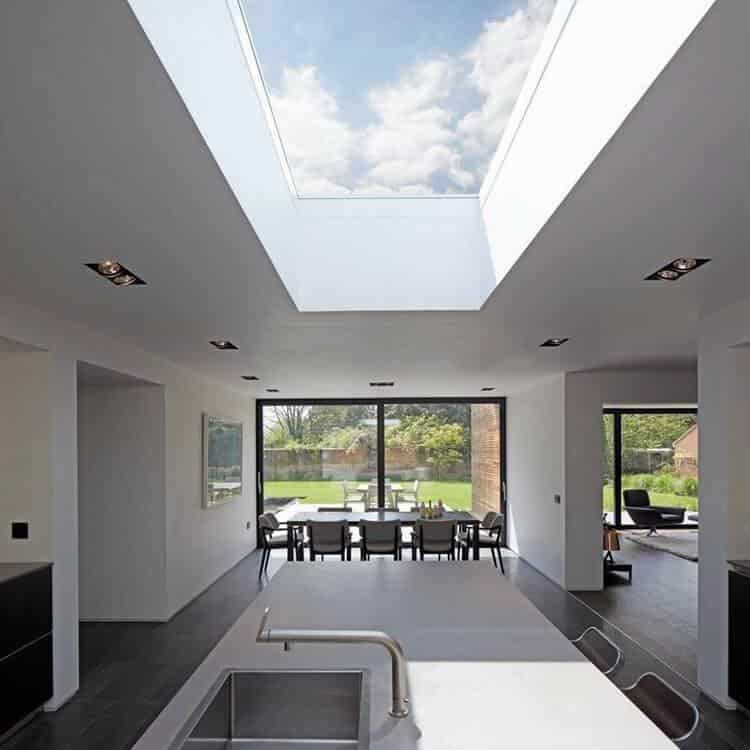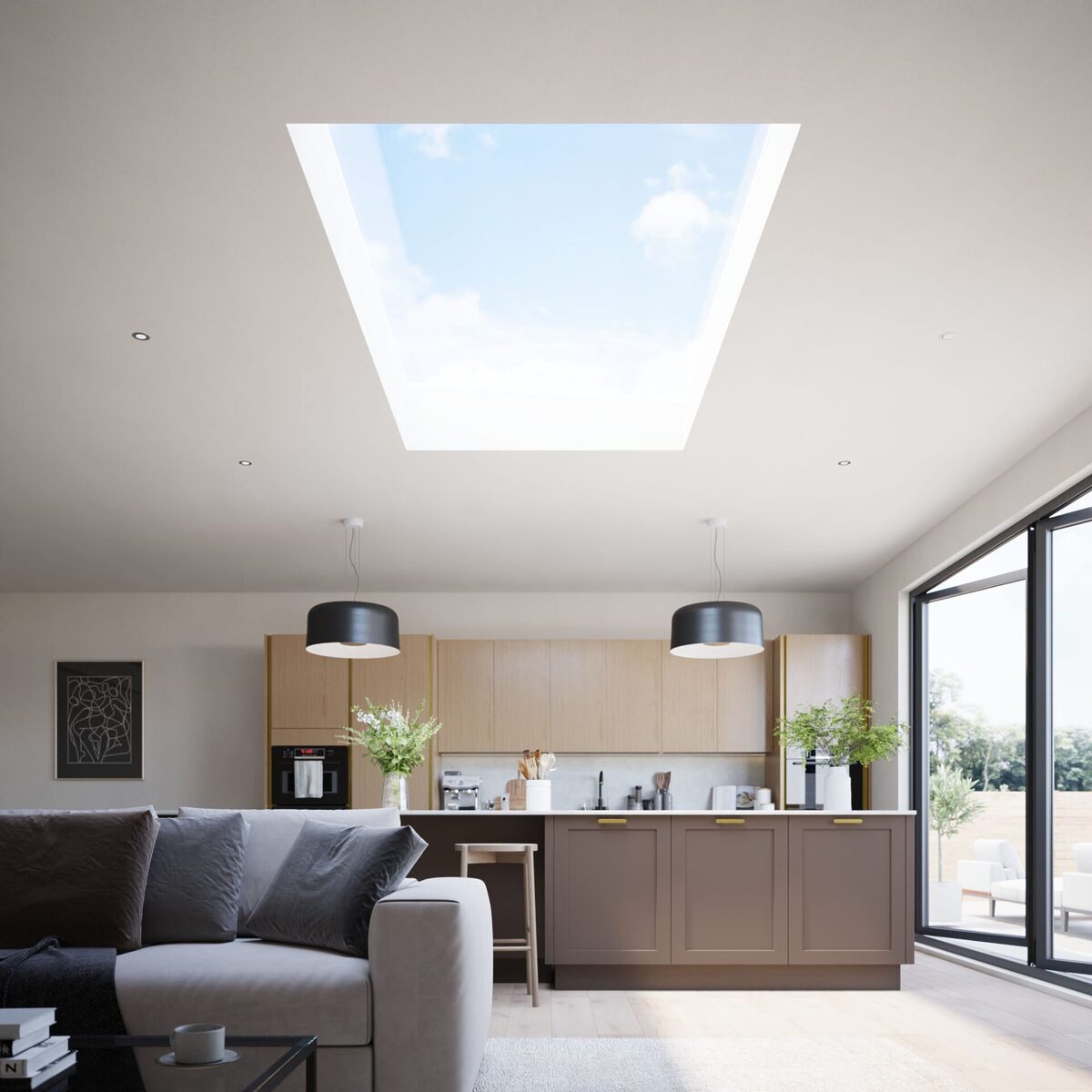

Skylight roofing solutions provide a unique approach to enhancing residential spaces. They allow natural light to flood in, creating a warm and inviting environment.
This architectural feature not only elevates aesthetics but also promotes energy efficiency. With various types available, homeowners can tailor installations to meet their specific needs.
However, considerations during the installation process can greatly impact performance and longevity. Understanding these factors is essential for anyone contemplating this transformative addition.
Skylights serve as a transformative element in home design, enhancing both aesthetics and functionality. They invite an abundance of natural light into a space, creating an airy atmosphere that can make rooms feel larger and more inviting.
Additionally, skylights can improve energy efficiency by reducing the need for artificial lighting during the day. Their strategic placement can also provide ventilation, helping to regulate indoor temperatures and improve air quality.
Beyond practical benefits, skylights add a unique architectural feature, elevating the overall design of a home and increasing its appeal to potential buyers. Consequently, they embody both beauty and utility in modern living.
When selecting the perfect skylight for a home, it is essential to contemplate various types that cater to different needs and aesthetics. Fixed skylights provide unobstructed views and natural light, making them ideal for hallways and living rooms.
Ventilated skylights offer the added benefit of airflow, perfect for kitchens or bathrooms. Tubular skylights are compact options that channel sunlight into smaller spaces, ensuring brightness without compromising on room size.
Ultimately, custom skylights can be designed to suit unique architectural features, allowing homeowners to create a personalized touch that enhances their living environment while maximizing the benefits of natural illumination.

Although homeowners often seek natural light and aesthetic appeal in their living spaces, energy efficiency and sustainability are equally important considerations when choosing skylights. Well-designed skylights can markedly reduce reliance on artificial lighting, thereby lowering electricity bills.
Additionally, energy-efficient models often feature insulated glazing, minimizing heat loss during colder months and reducing cooling needs in warmer seasons. By integrating skylights made from sustainable materials, homeowners can further enhance their eco-friendly footprint.
Ultimately, selecting the right skylight not only enhances natural illumination but also contributes to a more sustainable and energy-efficient home environment, benefiting both the occupants and the planet.
How can the strategic use of natural light transform a living space? By incorporating skylights, homeowners can greatly enhance the aesthetics of their interiors. Natural light creates a sense of openness, making rooms appear larger and more inviting.
It highlights architectural details and decor, adding depth and warmth to spaces. Additionally, varying light angles throughout the day bring dynamic visual interest, making environments feel alive and ever-changing.
The interplay of light and shadow can create mood and atmosphere, elevating the overall design. Ultimately, the thoughtful integration of natural illumination enriches the beauty and appeal of any living area.

Before starting a skylight installation, careful planning and consideration are vital to guarantee a successful outcome. First, the location must be assessed to ascertain optimal sunlight exposure and structural integrity.
Next, selecting the right type of skylight-fixed, vented, or tubular-depends on the intended function and space requirements. Precise measurements are essential, as improper sizing can lead to leaks and inefficiencies. Additionally, local building codes and regulations should be reviewed to avoid compliance issues.
Finally, enlisting a professional installer can enhance the quality of the installation, ensuring durability and performance, ultimately maximizing the benefits of natural illumination in the space.
Regular maintenance is essential for guaranteeing the longevity and performance of skylights. Homeowners should routinely inspect the skylight for any signs of leaks, cracks, or damage.
Cleaning the glass surface with a mild detergent prevents dirt buildup, maximizing natural light. It is also important to check the flashing and seals for wear, as these components protect against water intrusion. Additionally, removing debris from the surrounding roof area reduces the risk of blockage and enhances drainage.
Regularly scheduled professional inspections can further guarantee that any potential issues are addressed promptly, maintaining the skylight's functionality and aesthetic appeal over time.

Installing skylights can be a complex task that requires knowledge of roofing, structural integrity, and proper sealing techniques. While some individuals might consider a DIY approach, it is generally advisable to hire a professional. Professionals possess the necessary experience and tools to guarantee a proper installation, minimizing the risk of leaks and structural damage. Ultimately, opting for an expert can lead to a more efficient and successful skylight installation, enhancing the overall safety of the home.
Installing a skylight oneself is possible, but it requires a good understanding of roofing and construction techniques. A homeowner with the right skills can save on labor costs, but they must guarantee proper sealing and structural integrity to prevent leaks and damage. Additionally, local building codes and permits may impose restrictions, necessitating thorough research. Ultimately, it�s advisable for those lacking experience to consult a professional to guarantee a safe and effective installation.
Yes, there are building codes for installing skylights, which vary by location. These codes typically address structural integrity, energy efficiency, and safety standards. Homeowners must guarantee that their installation complies with local regulations, which may include requirements for proper flashing, insulation, and ventilation. Additionally, permits may be needed before installation. Consulting with local building authorities or a professional contractor can help guarantee adherence to all applicable codes and standards.